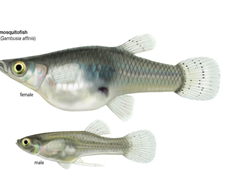

Hoolock gibbon: India’s only ‘Ape’

Recently, as the meeting of Global Gibbon Network (GGN) held in China, the conservation status of India’s only ape was a cause for concern at a global event on gibbons.
About the Species:
- Gibbons, the smallest and fastest of all apes, live in tropical and subtropical forests in the south-eastern part of Asia.
- The hoolock gibbon, unique to India’s northeast, is one of 20 species of gibbons on Earth.
- The estimated population of hoolock gibbons is 12,000.
- The current conservation status of gibbon species is alarming – all 20 species are at a high risk of extinction.
- Western Hillock Gibbon:
- Its range extends into seven states covering Arunachal Pradesh, Assam, Manipur, Meghalaya, Mizoram, Nagaland, and Tripura.
- Protection Status: The western hoolock gibbon is 'Endangered' according to the IUCN Red List found in India.
- Eastern hoolock gibbon:
- It inhabits specific pockets of Arunachal Pradesh and Assam in India, and in southern China and north-east Myanmar outside India.
- It is listed as Vulnerable under the IUCN Redlist.
- In India, both the species are listed on Schedule 1 of the Indian (Wildlife) Protection Act 1972.
‘Cicada species’ proved an Indian identity

According to the research led by Travancore Nature History Society, the discovery that involved correcting the mistaken identity of Purana cheeveeda with Purana tigrina (indigenous to India) has been corrected.
- Approximately 250 kinds of cicadas are known to occur in India. They are distributed across many genera and Rustia is only one of them.
Historical background:
- Purana tigrina was first described in 1850 from the Malabar Coast of south-western India by the English entomologist Francis Walker.
- It occurs in primary lowland rainforest but is more often found in secondary forest, felled areas, parks and gardens.
|
Do you know?
|
About the Species:
- Purana tigrina is a species of cicada found in Southeast Asia.
- It was described from Malabar, South India.
- It is a common species in the Malayan Peninsula and on Bunguran Island in the South China Sea.
- The body length of a male is 5–29 mm and that of the female somewhat less at 18–23 mm.
- They have a greenish-ochraceous head and thorax, and brownish-ochraceous abdomen.
- The head and thorax are marked in black.
Gambusia

Recently, Andhra Pradesh has releases 10 million Gambusia fish (mosquitofish) in waterbodies to control malaria, dengue.
About the Species:
- Gambusia affinis (Gaffinis) is native to the waters of the south-eastern United States and a single full grown fish eats about 100 to 300 mosquito larvae per day.
- Mosquitofish has been part of various malaria control strategies in India since 1928, including the Urban Malaria Scheme.
- The fish are generally understood to be a good biological control method against mosquito breeding but is not a sole solution to control Malaria.
- Multiple countries, including India have listed ‘Gambusia’ as invasive species.
- However, the fish continues to be a prominent part of the country’s malaria control programmes and the fish continue to be released into freshwater bodies across the country, like Andhra Pradesh, Chandigarh and Uttar Pradesh


